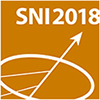The energy range between 1.5 and 5 keV (tender X-rays) covers absorption edges of important elements whose electronic and magnetic structure is challenging to study in the hard or soft X-ray range. X-ray emission spectrosocpy (XES) in combination with X-ray absorption spectroscopy (XAS) can provide sharper spectral features and allows studying the occupied and unoccupied density of electronic...
At the metrology light source (MLS), the compact electron storage ring of the Physikalisch-Technische Bundesanstalt (PTB) with a circumference of 48 m, a specific multiple orbit for stored electrons was realized closing after three turns. In combination with single electron bunch operation, the new mode was applied for electron time-of-flight spectroscopy with an interval of the synchrotron...
A prototype neutron backscattering spectrometer using the GaAs 200 Bragg reflection has been developed to bring about a substantial increase in energy resolution. Test measurements on the backscattering spectrometer IN16B at the ILL have yielded an unprecedented resolution of δE = 77 neV FWHM [1], an order of magnitude smaller than the current standard of 750 neV FWHM as well as a factor of 4...
The main motivation of our work is to develop high-throughput as well as dose efficient X-ray imaging instrumentation and techniques for small animal imaging of vertebrate model organisms with high resolution and adjustable field of view (FOV) for multi-scale observations of whole organisms, organs, and cellular processes.
High-resolution 3D and 4D X-ray imaging of model organisms and their...
The group 'X-Ray Nanoscience and X-Ray Optics' at DESY and Universität Hamburg works on the development of refractive X-ray optics with optimum performance as well as scanning X-ray microscopy techniques in the hard X-ray regime. These are powerful scientific tools for structure determination that is applied in various scientific fields, such as biology, chemistry (catalysis), physics,...
Magnetic films and heterostructures made of them or containing them are the basic building blocks of a large number of magneto-electronic devices whose fabrication is almost exclusively based on sophisticated thin film deposition techniques. The performance of the devices strongly relies on the magnetic properties of the layers they consist of. These are functions of the layers' morphology and...
The beamline P64 at the high brilliance source PETRA III at DESY houses a dedicated quick-EXAFS monochromator for spectroscopy in the ms range and offers special equipment for in-situ and in-operando experiments. The monochromator consists of Si(111) and Si(311) crystals on an oscillating stage with frequencies of up to more than 50 Hz enabling spectra in the ms range. In the experimental...
For more than 35 years, Germany’s national metrology institute PTB uses synchrotron radiation for radiometry and further metrological tasks. Currently, the electron storage rings BESSY II and PTB’s own Metrology Light Source (MLS) in Berlin-Adlershof are used for this purpose. Basic methods refer to source-based radiometry (operating the storage rings as primary source standards),...
One of the important challenges in condensed matter science is to understand ultrafast, atomic-scale fluctuations that dictate dynamic processes in equilibrium and non-equilibrium materials. These fluctuations can be measured on the relevant time scale by time-correlating coherent scattering speckle patterns taken with ultrashort X-ray pulses from a free electron laser (FEL) in an X-ray Photon...
Accelerator mass spectrometry (AMS) is the most sensitive analytical method to measure long-lived radionuclides. Several AMS system has been recently established in Europe, however, most of them exclusively detecting carbon-14. At Dresden a 6 MV tandem accelerator is used for AMS since 2011: The DREAMS (DREsden AMS) facility [1-3] is part of the Ion Beam Center, a large-scale...
ODIN (Optical and Diffraction Imaging with Neutrons) is a beamline project at the European Spallation Source (ESS). It is a collaboration between the ESS, PSI and TUM, with TUM as lead institution.
ODIN will provide a multi-purpose imaging capability with spatial resolutions down to the µm range. The pulsed nature of the ESS source will give access to wavelength-resolved information. Different...
Neutron grating interferometry (nGI) is a relatively new neutron imaging technique, which simultaneously delivers information about the transmission (TI), phase shift (DPC) and the scattering (DFI) inside a sample [1].
In particular the DFI has generated high interest, due to its ultra-small-angle neutron scattering (USANS) contrast mechanism, allowing to indirectly resolve structures not...
A high-power, pulsed laser impacting the surface of a material can generate surface ablation, shock waves and crack propagation; while X-ray imaging can provide a time-resolved probe. Hard X-rays are perfectly suitable for visualizations of transient processes in optically opaque materials even for objects of several mm in size. The MHz pulsed time structure, tunable energy bandwidth, high...
The inherently safe research reactor TRIGA Mainz is able to produce neutron pulses with an energy of 10 MWs for a duration of 30 ms. This makes it a perfect tool for the investigation of the free neutron’s lifetime and for fundamental neutron research in general. Within the Cluster of Excellence PRISMA, a superthermal source for ultracold neutrons (UCN) was built and is used in pulsed...
Neutron TOF spectrometer NEAT has a successful history of applications to the study of dynamics in the large time and length scale domains 0.01 – 100 ps and 0.05 - 5 nm, respectively, since the start of user operation in 1995. To address user community needs in more powerful instrumental capabilities, a concept of the full instrument upgrade has been developed and proposed. The upgrade started...

